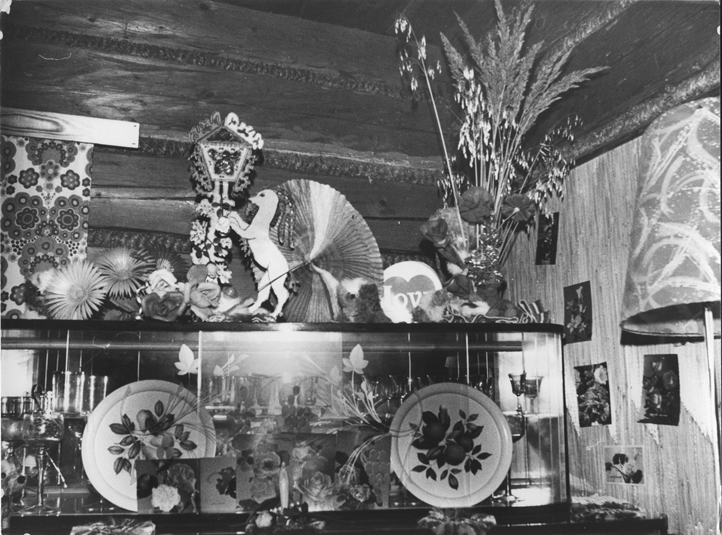Excerpts from Joanna Kubica’s unpublished interview with Zofia Rydet for FOTO magazine, 1987, Zofia Rydet Foundation
The Record began growing imperceptibly. I would photograph a hut from the outside, then I would step inside, trying to find something to latch onto, to win over the owners, and then I would ask them if they would pose for me.

Then I would try to befriend them. I would talk to them. These were often remarkable people, with so much wisdom from life, and an impressive relationship to death, to the passing of time.

I would also take their portraits. Just their faces with the interior as a backdrop. Those interiors were extraordinary, there were so many various knick-knacks, objects, “pearls” that I managed to capture. Every tapestry was different from the others; there were some truly lovely things.


I say “lovely” not because I would like to have those things in my own living space, but because in those places, in the surroundings of those particular people, that’s just how they look. I captured those things because it might not be long before they no longer exist. For example, I documented various professions: a village hairdresser, a mailman, a forester, a shoemaker. For most of those people their occupation is the most marvelous thing in the world, and I try to document that. This is the convention I used for my “Women on Doorsteps” series in the Record: I always ask the ladies of the house to stand by the entrances to their homes, and based on those you can tell where the pictures were taken: if the woman is taller than the doorway to her hut you know at once it’s Podhale, while if the door frame is far above the woman’s head, it’s Silesia.

I’m also doing the “Windows” series, and something I call the “Myth of Photography.” Generally over the homeowners’ beds you have their wedding photo, for example, from which I am trying to make a few photomontages that aim to move these photographs from over the bed to the places that are most important in the home: in the kitchen, by the cupboard.

(...)
Going about the villages, photographing their inhabitants, I had the opportunity to see so much human suffering, misfortune, poverty; and yet I met with an enormous and often unfounded faith in people and an enormous faith in God. In the photographs that make up the Record, I always tried to show not only what could be of ethnographic or sociological value—I also wanted to depict values, a simple world, and one that is perhaps irretrievably vanishing. Just imagine an old woman who is eighty-five years old, lives utterly alone in a hut that is caving in. She sleeps on a mattress whose straw is half missing, under a dirty rag for a blanket, and lives off of what people from the village bring her to eat. And that woman has so much optimism inside of her, so much faith that “God wants to take her up soon” and her suffering will cease. She believes that people are truly good, because they come to her, bring her water, food, and if they sometimes forget, well, they do have their own things to tend to. Could you find someone nowadays who thinks this way? I don’t know. I capture this old woman and her surroundings in a photograph and I have the feeling that I put her in the frame for eternity; her world survives. I try to make my photography a testimony to this way of thinking and sensibility, so that it documents not only the visible, but also what can be sensed and intuited.